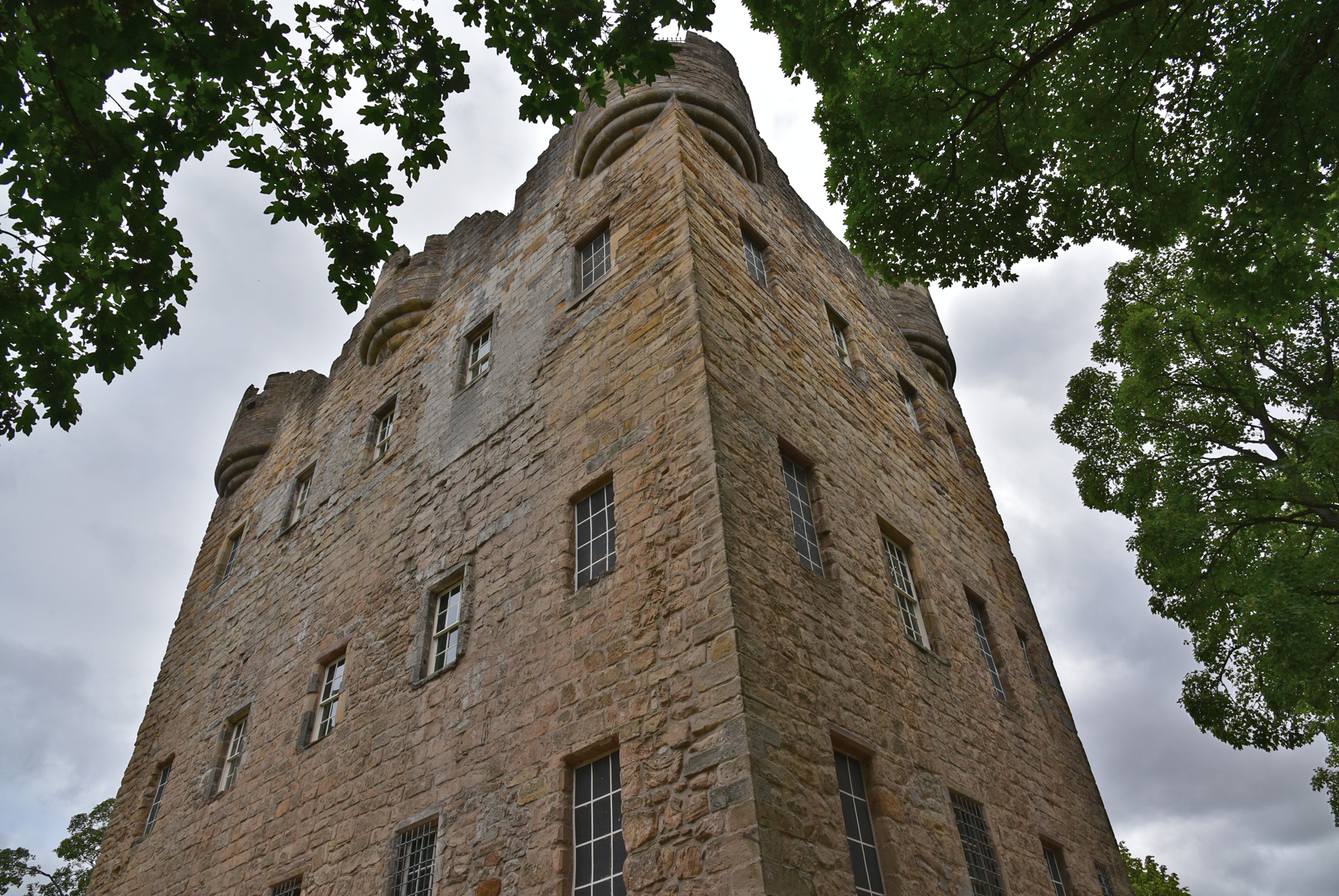Curse of Alloa Tower
Alloa Tower dates from the 14th century and was the ancestral home of the Erskine family, later Earls of Mar and Kellie, for four centuries. It was part of a line of fortifications defending the Firth of Forth.

Alloa Tower was altered in the 17th century when larger windows and a Renaissance-style entrance were added. In 1710, John Erskine, 6th Earl of Mar, created a mansion (Alloa House) incorporating the tower as an annex. John Erskine would also lead the Jacobites in the 1715 Jacobite Rising. He was called Bobbing John due to his ability to change sides between supporting the Hanoverians and the Jacobites. The rising failed, and the Earl of Mar fled abroad.
Alloa Tower was cursed after the sale of stones from Cambuskenneth Abbey following the Reformation.
As Richard tells the story ...
The Erskines continued to prosper, and the 6th Earl of Mar became Secretary of State for Scotland during the reign of Queen Anne. In 1710, they extended the tower by tacking a grand house onto it, which effectively created a manor house, with the tower becoming a wing of the enlarged building. But then things began to go wrong for the family. Its members could have been forgiven for thinking the change in their fortunes might owe something to a curse placed upon them at the time of the Reformation. Following the Dissolution of the Monasteries, the Erskines had purchased Cambuskenneth Abbey and had sold off its stone to local builders. The former About didn't take too kindly to the destruction, and he placed a curse upon the Erskines, promising that strangers would take over their lands one day. Furthermore, he prophesied that a future Erskine would see his home consumed by fire. The curse, he said, would not be lifted until Alloa Tower was used as a stable, a weaver sat in the laird's chamber, and a sapling grew from the top of the tower.
In 1715, the 6th Earl led the ill-fated Jacobite uprising and was forced to flee to France. Thereafter, the Erskines were stripped of their title and their estates, and, for a time, strangers did indeed take over their lands. The situation was remedied in 1724, when Sir John's brother, Lord Grange, bought the estate and held it in trust for the family. On 28 August 1800, the mansion was destroyed by fire, although the local people managed to save the tower by placing a turf cut from the lawn around its walls. The family then resided at their other properties, and dragoons took over the tower, using it to stable their horses. In 1815, a homeless weaver took shelter in what had been the laird's chamber. Then, in 1814, an ash sapling was noticed sprouting from the roof of the tower. By 1824, the Erskines were able to put the curse behind them, as their titles were reinstated.
Alloa Tower, however, continued to fall into decay, and by the 1980s it was little more than a forlorn ruin. But then the tower was restored to its former glory. Now, visitors can marvel at its magnificent interior and, it is said, also smell the spectral smoke that supposedly wafts around the tower on the anniversary of the fire.
- Richard Jones
